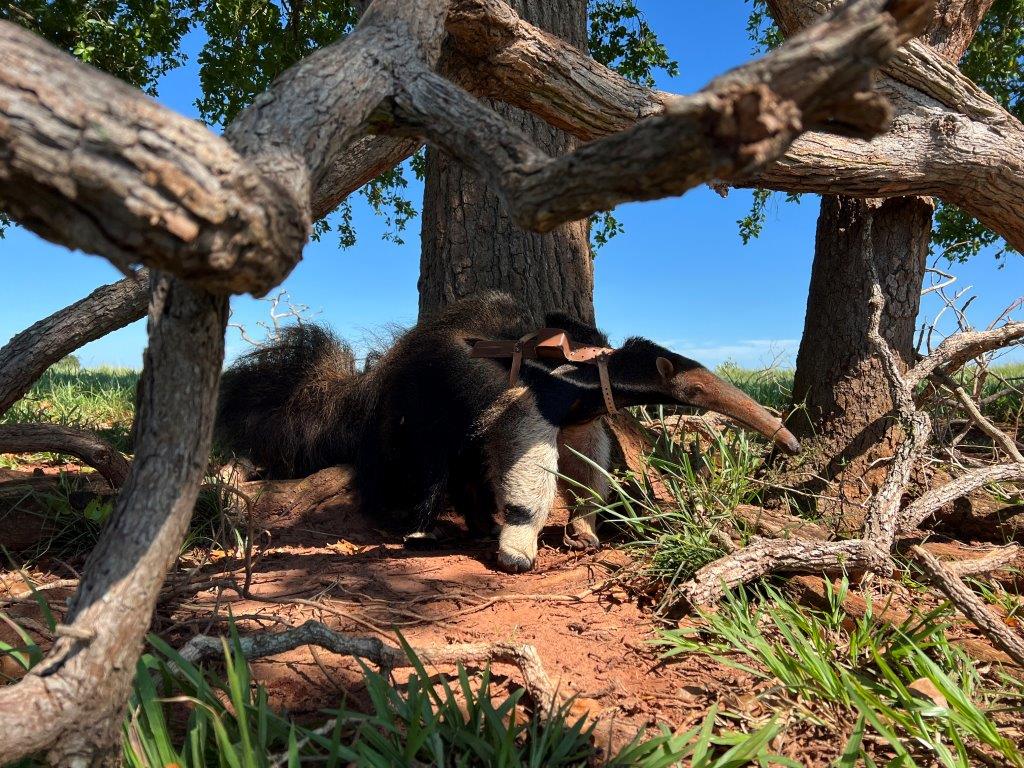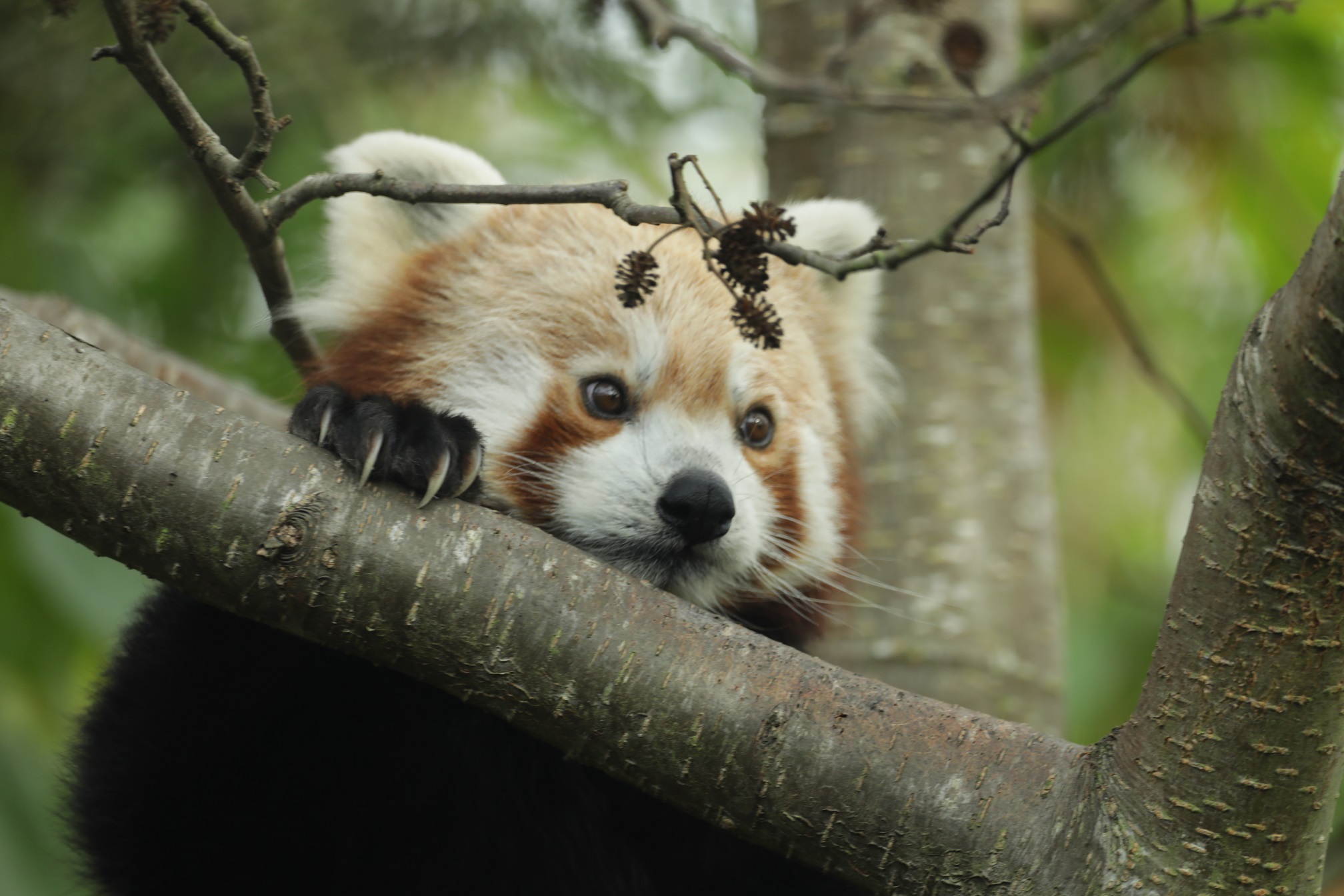June 2024: Giant anteater conservation update
Posted 3 Jul 2024

Our charity has worked with Dr Arnaud Desbiez and his team at the Wildlife Conservation Institute (ICAS) in Brazil for over a decade to safeguard threatened giant anteaters, giant armadillos and their rapidly disappearing habitat. This team has made incredible strides in making habitats and roads safer for giant anteaters, and discovered nearly everything that is currently known about giant armadillos.
Arnaud recently updated us on what’s been happening with ICAS’ giant anteater conservation work in the last few months.
Returning giant anteaters to the wild
Despite our best efforts, only 50% of the orphaned giant anteaters rescued by our team end up returning to the wild. Some simply don't make it and die in the weeks following their arrival at our care centre, while others do not show enough signs of independence to be able to be released and live on their own in the wild.
Even for those who do make it back into the wild there are still many dangers to face, and we are saddened to share Bahia’s story. Bahia was a young female who had been successfully released at the end of 2023, and our recent health checks proved that she was doing incredibly well in her new environment. Unfortunately, we received a mortality signal, rushed to the field and found her dead. The necropsy and telemetry data show that she was run over by a vehicle on a dirt road, managed to get herself to a nearby bush and sadly passed away. This is an unfortunate instance of history is repeating itself - Bahia was brought to our care centre after she was found on a highway next to her mum who also died in a vehicle collision.
Thankfully there is also some good news to share. Giant anteaters Bella and George were brought to our care centre as pups - they successfully passed the rehabilitation process together and were later released with GPS collars. We are so pleased to announce they are now independent wild giant anteaters, thriving a year and a half post-release! This is the outcome we always hope for.
We have also just released two more collared giant anteaters, Helen and Dom, in the protected area of Aguas Vivas - Helen was actually named after RZSS conservation programme manager, Dr Helen Taylor! While Dom was quick to leave the rehabilitation enclosure, it took Helen five days before she eventually ventured off on her own. We wish them both the best of luck in the wild.
/icas anteater 2.jpg)
Road monitoring
Roads are an issue for animals globally, preventing movement and dispersal and causing death via vehicle collisions. Vehicle collisions in particular are a major risk that giant anteaters face, and the species is sadly a frequent roadkill casualty.
We have now finished the last round of monitoring for the BR-262 road that crosses part of the Pantanal. Since May 2023, 24 monitoring campaigns were carried out on the 350km stretch of road from Campo Grande to the Paraguay River Bridge. Each monitoring campaign found between 90 and 200 animals that had been casualties of vehicle collisions, with a total of 2,300 animals in just one year.
All animal groups are affected - mammals, birds, amphibians and reptiles. Six and nine-banded armadillos occupy the first place amongst the killed species, totaling more than 400 individuals. However, more than 200 anteaters, lesser anteaters and giant anteaters, were found by the team this past year. In addition to recording the victims of collisions, monitoring highways also serves to collect samples which will be sent to partner laboratories allowing us to assess the health of these animals and the environments they live in.
We have been monitoring this highway since 2013 and we cannot stress how vital and urgent it is that effective measures to reduce vehicle collisions are implemented. It is frustrating that a solution has been submitted and approved, but the work to put these mitigation strategies in place is yet to begin. Sadly, until this is done people and animals will continue to be injured and killed unnecessarily on these roads.
/icas.jpg)
Wildlife road signage
We are pleased to share that following interviews, vehicle speed measurements and a highway management workshop, a new wildlife warning sign model is undergoing submission for approval at the National Agency. The primary objective of this new signage was to enhance drivers’ perception of risk – drivers who don’t recognise the potential danger are less likely to adopt the expected cautious behaviours, such as increased attention and reduced speed, to prevent vehicle collisions with wildlife. If all goes well, and the new signage proves to be more effective, then there is potential for it to replace all wildlife crossing signs in Brazil!
/road_monitoring.jpg)
Long term study of giant anteaters
Some difficult decisions need to be made regarding our long-term study site at the Santa Lourdes ranch. Last year, we lost a total of 10 giant anteaters due to environmental changes. The area surrounding our study site has now been completely converted from pasture to soy fields. While pasture can sustain some levels of biodiversity due to the trees that remain, soy fields are ecological deserts. To make matters worse, the area of eucalyptus used by giant anteaters in this site is due to be cut. As a result, we are now exploring the option of starting a new study site in an area that is less threatened.
The APA Guarirobas is an area that is being protected by landowners as there are several springs that provide water to the city of Campo Grande. ICAS has just been made a part of the board of consultants for the area and we have started speaking with landowners to see if we could start monitoring giant anteaters in the area.
We would of course continue to monitor some key giant anteaters in Santa Lourdes, such as Hannah and Maria. Maria is calculated to be over 10 years old and Hannah around eight. This is the longest ever study on wild giant anteaters, so we need to continue monitoring key individuals to answer questions about reproductive longevity amongst others. We hope to be able to share more information about starting a new potential study area in our next update.
We would like to thank the players of People’s Postcode Lottery for their generous support which has helped this project.

